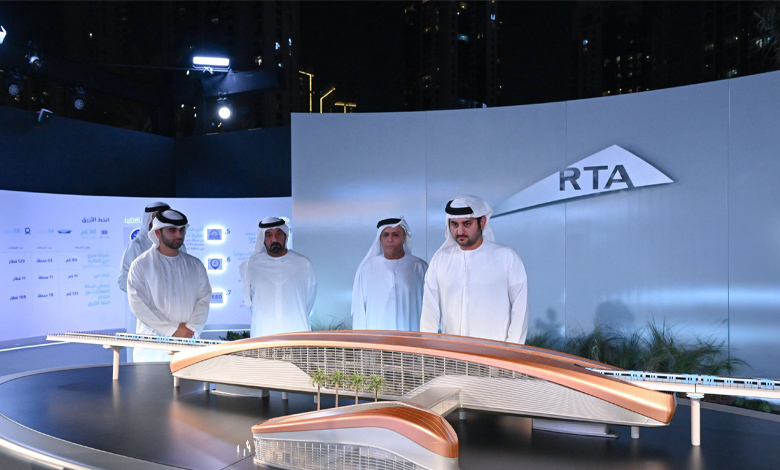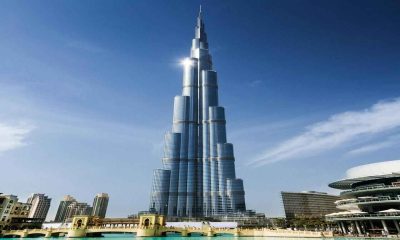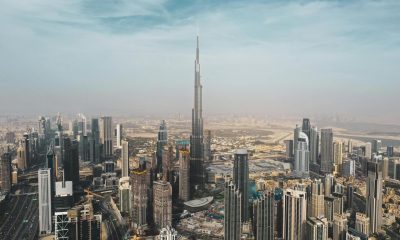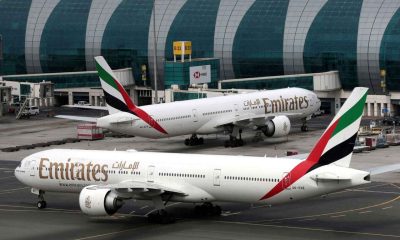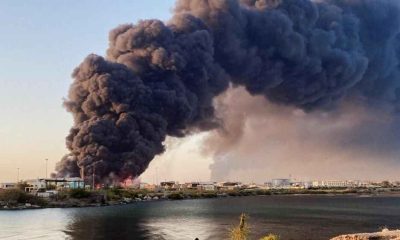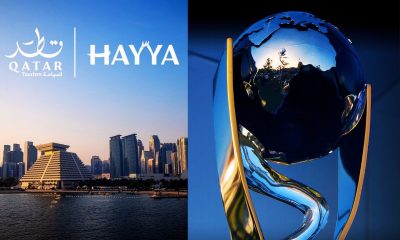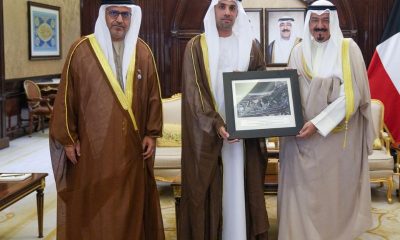It is a component of the 2040 Urban Master Plan for Dubai, which seeks to establish a “20-minute city.”
HH Sheikh Mohammed bin Rashid Al Maktoum, Vice President and Prime Minister of UAE and Ruler of Dubai, has given the green light to the Dubai Metro Blue Line project. This new 30 km metro route will connect important areas in the emirate through 14 stations, aligning with the projected growth of around one million residents as outlined in the Dubai 2040 Urban Master Plan.
“Remarkable achievements don’t happen by chance; rather, they result from deliberate planning, creative thinking and a commitment to attaining the highest levels of leadership. The true measure of achievement lies in its positive impact on society. We strive for the best for our society, sparing no effort to achieve it at the highest standards,” His Highness said.
With an estimated completion date of 2029, the 1,300-meter viaduct supporting the elevated railway that links Al Jaddaf with Dubai Festival City and Dubai Creek Harbour will see trains traverse the historic Dubai Creek for the first time.
The crucial point of integration between the current Red and Green Lines will be the Blue Line. It is a component of the Dubai 2040 Urban Master Plan, which attempts to develop a “20-minute city,” a transit-oriented community in which inhabitants will be able to access 80% of the essential services they require in less than 20 minutes.
The route, passenger capacity, travel time, and service intervals between stations have all been made public by the Roads and Transport Authority (RTA). The main conclusions are as follows:
What Are The Areas Of Service?
Nine important areas, including Mirdif, Al Warqa, International City 1 and 2, Dubai Silicon Oasis, Academic City, Ras Al Khor Industrial Area, Dubai Creek Harbour, and Dubai Festival City, will be connected to Dubai International Airport (DXB) by the Blue Line. RTA estimates that there will be a significant 10 to 25-minute reduction in travel time via the Blue Line between these destinations.
In keeping with the 2040 Urban Masterplan, Blue Line will also link the aforementioned nine areas to Dubai’s five urban centers, which include the commercial and economic hubs of Sheikh Zayed Road, Downtown Dubai, Business Bay, Expo 2020 Centre, and Dubai Silicon Oasis Centre; the historic districts of Deira and Bur Dubai; and the tourism hubs of Dubai Marina and JBR.
Approximately one million residents who live in the areas covered by Blue Line will directly benefit from the project, according to Mattar Al Tayer, director-general of RTA and chairman of the board of executive directors.
The entire length of the Blue Line stations will be 30 km, of which 15.5 km will be elevated rail and 14.5 km will be subterranean (with a maximum depth of 70 meters).
The new route will have 14 stations built in total: 9 elevated and 5 underground, including the largest underground interchange station in the metro system. It will be located in International City and span 44,000 square meters, with the capacity to handle 350,000 passengers per day.
The interchange points will be located at Dubai International City Station 1, Creek Station on the Green Line, and Centerpoint Station on the Red Line.
According to Al Tayer, Blue Line will be distinguished by an iconic 8,800-square-meter station located at Dubai Creek Harbour. The world-famous firm Skidmore, Owings, and Merrill, which also created the Burj Khalifa, the Denver Union Railroad Station in Colorado, and the Sears Tower in Chicago, USA, is responsible for the building’s unique architecture.
Routes The Dubai Metro Blue Line will have two primary routes, according to Al Tayer. The first route starts in Al Jaddaf at the Creek Interchange Station on the Green Line. Following that, it travels via Ras Al Khor, Dubai Festival City, and Dubai Creek Harbour before arriving at Dubai International City 1, which is equipped with an interchange station. The path keeps going up to the Academic City and Dubai Silicon Oasis before reaching Dubai International Cities 2 and 3. There are ten stations along the 21 km length of this section.
The Blue Line’s second route begins at the Red Line’s Centrepoint Interchange Station in Al Rashidiya. It will end at Dubai International City 1 Interchange Station after passing through Al Warqaa and Mirdif. There are four stations along this 9-kilometer route. At Al Ruwayyah 3, a metro depot will also be present.
What Is The Capacity Of Passengers?
At a service interval of roughly 1.5 minutes, the Blue Line is intended to carry an estimated 56,000 passengers per hour in both directions.
The Blue Line is expected to be used by 50,000 university students from Academic City by 2029.
It is anticipated that the Blue Line will carry roughly 200,000 passengers per day by 2030, and 320,000 passengers per day by 2040.
Benefits And Costs Of The Dubai Metro Evolution, The Blue Line’s Vision For 2040
The construction of Dubai’s newest public transport project is expected to cost Dh18 billion. With the construction of the Blue Line, Dubai’s railway network will reach 131 km, with 168 trains and 78 stations.
According to preliminary RTA studies, the project will save as much as Dh56.5 billion in fuel and time savings, fewer accident-related deaths, and lower carbon emissions by 2040. In addition to facilitating mobility, the Blue Line is expected to increase the value of real estate by up to 25%, which is in line with the objectives of the Dubai Economic Agenda.
The metro line will also result in a 20% reduction in traffic congestion on the routes it serves.
Implementation Schedule
On Friday, November 24, contractors, joint ventures and consortiums had until Friday to submit their bids for the Blue Line. The awarding of the projects will be announced the following year, and in 2025, tunnel boring will begin to build an underground corridor for the Blue Line.
The official launch is scheduled for 2029, which also happens to be the 20th anniversary of the Dubai Metro, which began service on September 9, 2009. A trial operation is anticipated to take place in 2028.
Read More: COP28 Is Near! Explore the Glimpse into Recent Climate Agendas.
